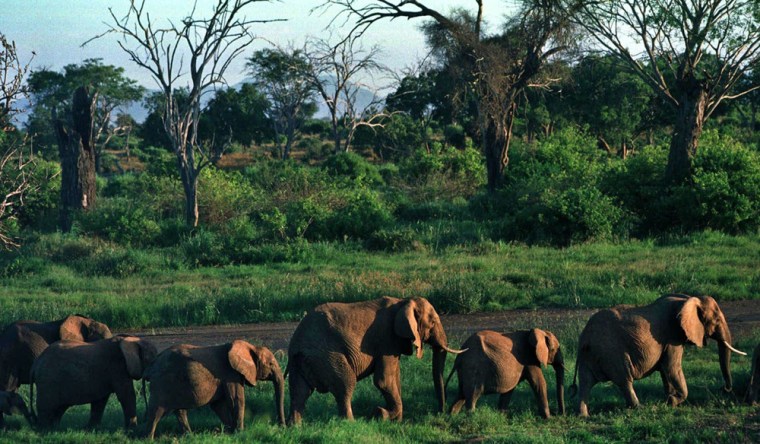Championed by Nobel Peace Prize winner Wangari Maathai, Kenyan forests that once sheltered guerrillas fighting British colonialists are a battleground in a modern-day struggle against environmental devastation.
Experts estimate about 75 percent of Kenya's forest has been logged in the last 150 years, leaving two percent of Kenya’s land under forest cover.
Grabbed by corrupt politicians, cleared by hungry peasant farmers and chopped down by loggers looking for a quick profit, huge tracts of ancient woodland have fallen victim to shady deals and a lack of government controls.
Maathai, the Kenyan activist who was named Nobel Peace Prize winner on Friday, has worked to raise awareness of the importance of forests -- but also to expose the graft that greases much of the destruction.
“It’s not even corruption like stealing from the bank, this is stealing from the present and from the future,” Maathai told Reuters during a visit to threatened forests in 2001.
Kenya’s forest land has for decades been high-value currency in networks of patronage spun by the country’s political elite, often dubiously acquired from government bodies and then parceled out to allies who promptly log the trees.
Maathai was an outspoken critic of former President Daniel arap Moi, whose 24-year rule witnessed some of the most flagrant forest grabbing, but activists say the trees are far from safe under President Mwai Kibaki, who won elections in 2002.
Nature's sponges
For Kenya’s economy, trees could hardly be more critical. Forests near Mount Kenya and in the west of the country act like giant sponges, absorbing rainfall and releasing it to rivers nourishing farms that support the bulk of the population.
Wildlife is also in danger. To give just one example, the Kenya Forestry Working Group produced a report in April that said felling is threatening a river that supports herds of zebras in the Masai Mara, the famed park that sustains much of Kenya’s tourist trade.
Dwindling water levels could also stymie the government’s flagship Sondu Miriu hydropower project, designed to help end chronic power shortages, while some lakes are shriveling, hurting everyone from fishermen to flamingos.
The government says it is working on a policy to tackle a vast tangle of land disputes, many involving forests, that will ultimately lead to better protection, but activists fear that well-connected landowners will stand in the way.
Campaigners say a few influential families have acquired vast tracts of arable land, while millions of peasants have nowhere to live, piling more pressure on forests as squatters fell old trees just to plant a few stalks of maize.
Maathai won an assembly seat for the victorious opposition in the 2002 polls and is now assistant environment minister.
But clearances continue -- even in her own constituency of Tetu --and Maathai suggested on Friday she would quit the government if they continued.
“I would rather give up my (parliamentary) seat than see our forests destroyed,” she said.
